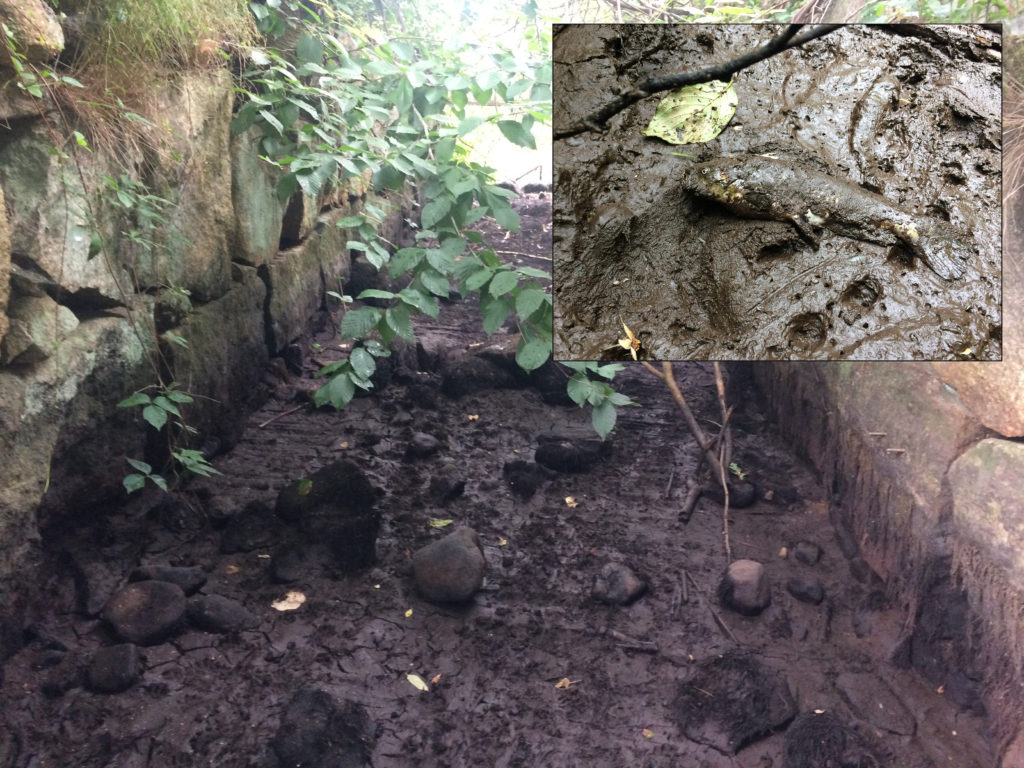 With the perfect storm of high heat, increased summer demand, and more people at home due to Covid-19, our streams are drying up. The reduced flow is caused, unfortunately, not just by minimal rain, but also high summer water use in our growing communities. Pumping draws out the groundwater that otherwise would feed streams even during dry periods. And the resulting problems are not just ecological for fish and wildlife, but also very severe water shortages in many communities.
With the perfect storm of high heat, increased summer demand, and more people at home due to Covid-19, our streams are drying up. The reduced flow is caused, unfortunately, not just by minimal rain, but also high summer water use in our growing communities. Pumping draws out the groundwater that otherwise would feed streams even during dry periods. And the resulting problems are not just ecological for fish and wildlife, but also very severe water shortages in many communities.
Currently, Scituate is in a Total Water Ban which was implemented on June 29th. This Total Ban includes no car washing, no filling of pools, no irrigation of lawns via automatic irrigation system as well as any lawn sprinklers. Watering of flowers, gardens, plants, and lawns may be done by hand-held hose only before 9am and after 5 pm. Norwell is under a Tier 4 Water Restriction. These restrictions prohibit the use of all non-essential outside water use with the exception of handheld watering of vegetables and flowers.
The Massachusetts Department of Environmental Protection policy recommends that we manage our water consumption so that we use no more than 65 gallons per person per day on average. South Shore communities typically uses 2 to 3 more times the water in summer months versus winter months. In Marshfield, for example, winter use is 2 million gallons per day and summer use is 4 – 7.3 million gallons per day. Irrigation systems are one of the major causes for the summer increase in water use.
(NOTICE: The vídeo below shows a fish gasping for water in a dried up local tributary. While disturbing, it highlights how important it is for all of us to conserve water to make sure our rivers and streams don’t run dry.)
What Can You Do to Save Water for People and Nature?
First, recognize that your water, whether it comes from a private or municipal well, comes from our watershed and that it is a shared resource for people and nature. All of nature depends on the top layer of water exposed or just below the surface of the land. While we can access large stores of water underground through wells, we lower the water table when we do – which impacts surface waterbodies that rely on groundwater to feed them. We need to save water all the time – not just when there is a drought – in order to safeguard that surface water.
Second, think about your landscape. Trying to maintain grass is the single largest consumer of household water. In the past, the Town of Norwell metered a single household using 30,000 gallons a day to water their lawn – that’s more than a standard 16’ x 32’ swimming pool! Grasses that are typical of suburbia are not native to the region and require a lot of water and feeding to maintain as green. Over the long run one of the best things you can do to reduce water consumption is to remove lawn and replace it with more native vegetation. Leave the areas where you really need turf, overseed with more drought tolerant species, and if it doesn’t rain let it go brown – it is just dormant and will come back when cooler temperatures and rain arrive.
Third, make a donation to the NSRWA to support our efforts to protect local waters.
For more information on creating a beautiful, healthy, water-saving yard the natural way, visit the Greenscapes section of our website.
To calculate your water usage, use our Water Calculator.

